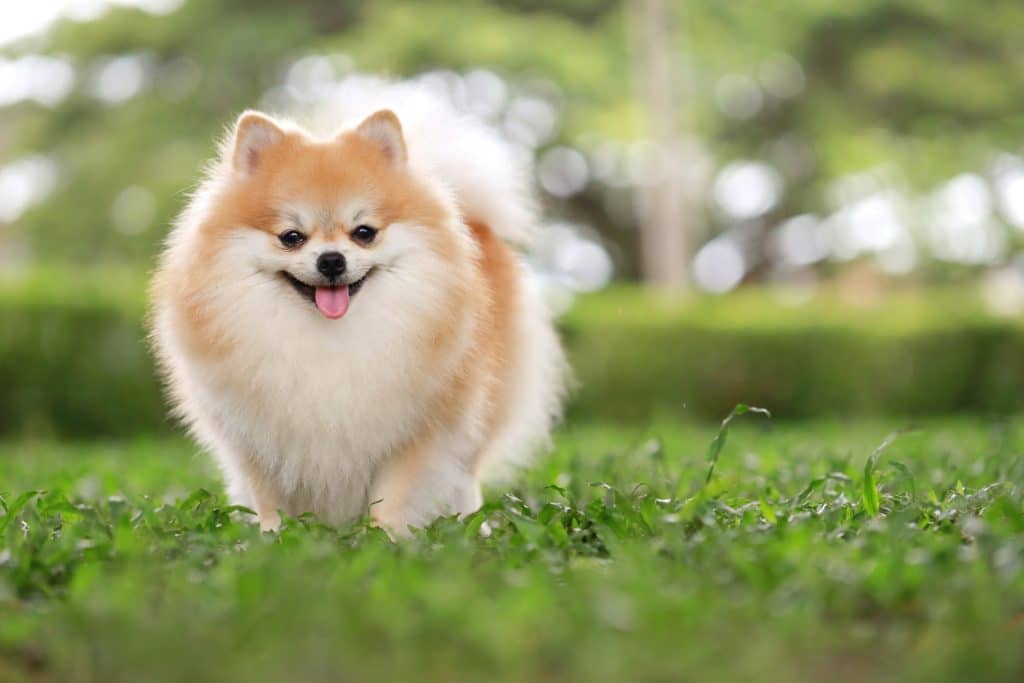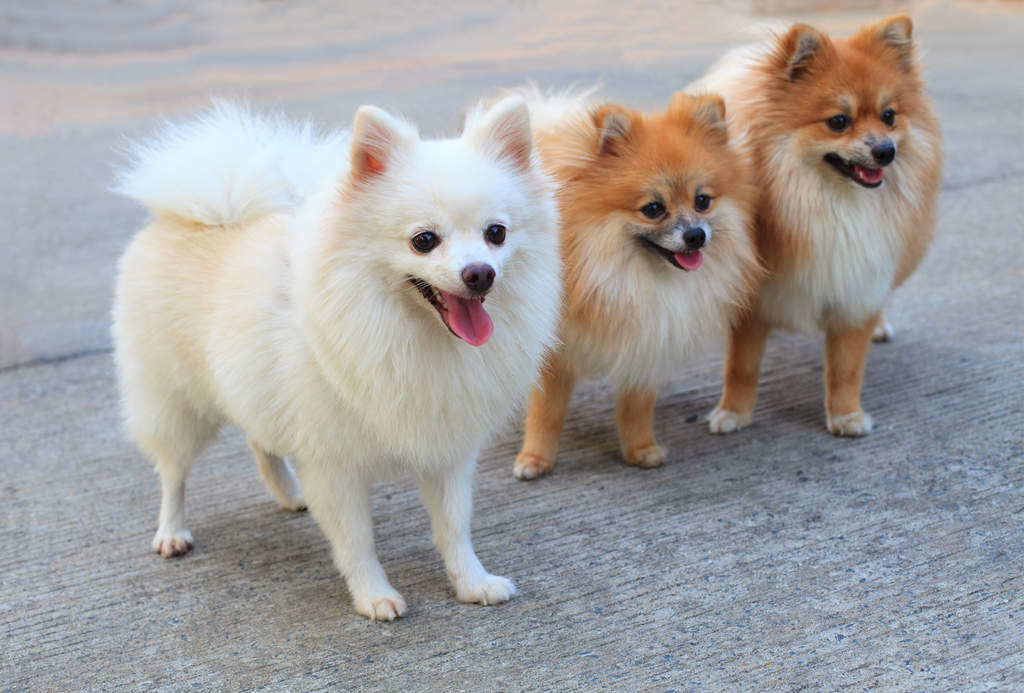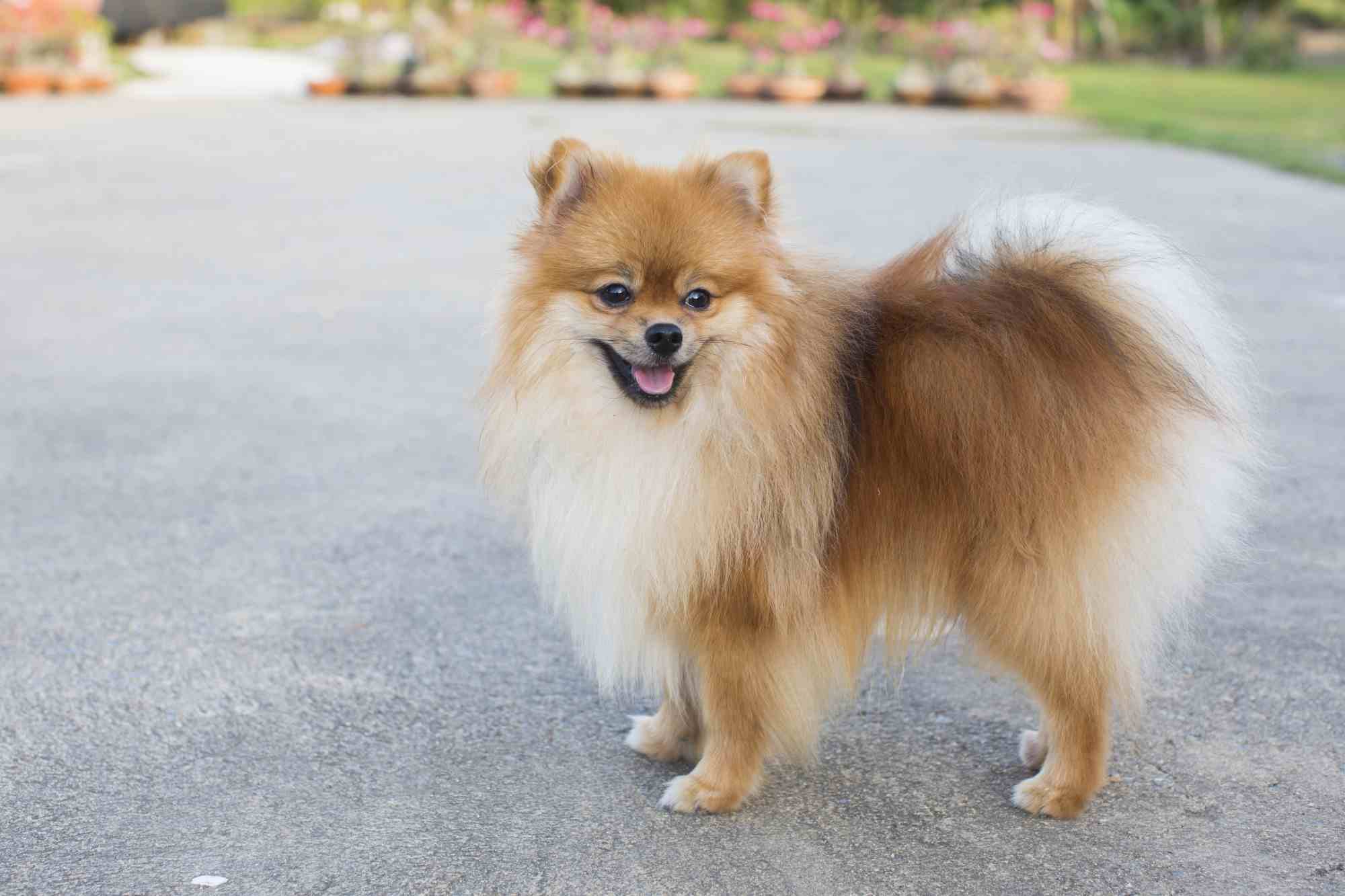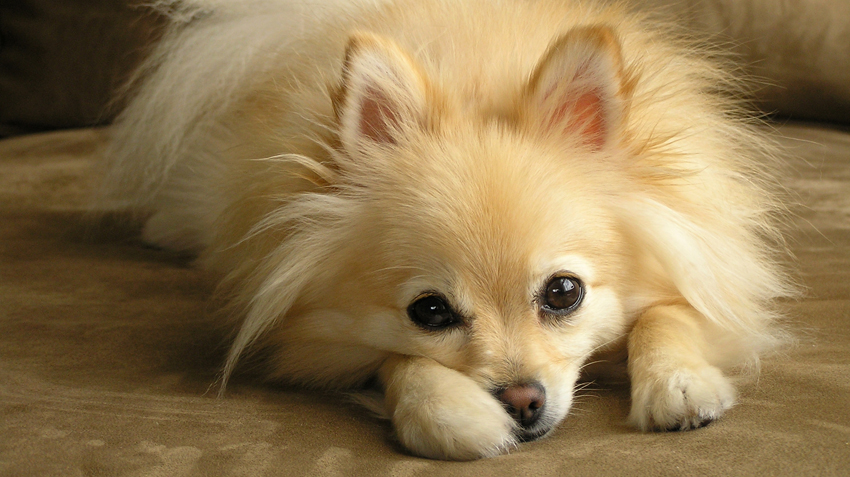
Pomeranian: A Complete Guide
The Pomeranian traces its origins to the larger Spitz-type dogs from the Arctic regions, which were used as sled dogs. The breed’s name is derived from the Pomerania region in present-day Poland and Germany. Pomeranians were significantly larger in the early days, weighing up to 30 pounds. It wasn’t until the breed was brought to England in the 19th century that they were bred down to their current toy size.
Queen Victoria of England played a significant role in popularizing the Pomeranian. She fell in love with the breed during a visit to Italy and brought several back to Britain. Her preference for smaller Pomeranians led to the breeding of even tinier dogs, further establishing the breed as a toy dog. The American Kennel Club (AKC) recognized the Pomeranian in 1888, and since then, they have continued to captivate dog lovers worldwide.
Physical Characteristics of the Pomeranian

Pomeranians are known for their distinctive appearance and fluffy coats. Key physical characteristics include:
- Size: Pomeranians are small dogs, typically weighing between 3 to 7 pounds and standing about 6 to 7 inches tall at the shoulder.
- Coat: They have a thick double coat with a soft undercoat and a long, straight outer coat. The fur forms a ruff of fur around the neck, resembling a lion’s mane.
- Head: They have a wedge-shaped head with a short muzzle and a black nose. Their fox-like expression is enhanced by their bright, almond-shaped eyes.
- Ears: Small, erect ears set high on the head.
- Body: Compact and well-balanced, with a level back and a high-set tail that lies flat and straight.
- Tail: The tail is one of the breed’s most distinguishing features, covered in a plume of fur and carried over the back.
Personality and Temperament of the Pomeranian

Pomeranians are renowned for their lively and spirited personalities. Key traits include:
- Boldness: Despite their small size, Pomeranians are fearless and confident, often acting as though they are much larger than they actually are.
- Affection: They form strong bonds with their owners and enjoy being the center of attention.
- Loyalty: Pomeranians are fiercely loyal to their families and can be protective, making them excellent watchdogs.
- Playfulness: They are energetic and playful, enjoying interactive games and toys.
- Intelligence: Pomeranians are smart and can be trained to perform tricks and follow commands. However, they can also be stubborn at times.
- Sociability: They are generally friendly and outgoing but can be wary of strangers and other animals if not properly socialized.
Basic Needs of the Pomeranian
To ensure a Pomeranian remains healthy and happy, it’s essential to meet their basic needs:
- Diet: A balanced diet with high-quality dog food is crucial. Due to their small size, portion control is important to prevent obesity.
- Exercise: Regular exercise, including short walks and playtime, is necessary to keep them physically and mentally stimulated. Pomeranians have bursts of energy but do not require extensive exercise.
- Grooming: Their thick double coat requires regular grooming to prevent matting and tangling. Weekly brushing and occasional baths are necessary. Regular dental care is also important due to their small mouths and tendency for dental issues.
- Healthcare: Routine veterinary check-ups, vaccinations, and preventive care are crucial to monitor their health and address any potential issues early.
Suitable Environment for the Pomeranian

Pomeranians are highly adaptable and can thrive in various living environments, from apartments to houses. Key considerations include:
- Space: While they do not need a large yard, Pomeranians benefit from having space to play and explore. They are well-suited to apartment living due to their small size.
- Companionship: These dogs enjoy being with their families and can suffer from separation anxiety if left alone for long periods. They thrive in homes where someone is usually around or where there are other pets for company.
- Safety: Due to their small size and delicate build, it’s important to ensure they are safe from potential hazards, such as being accidentally stepped on or attacked by larger animals. Supervised outdoor time in a secure area is ideal.
Training and Care for the Pomeranian

Training a Pomeranian is generally straightforward due to their intelligence and eagerness to please. Tips for training and care include:
- Positive Reinforcement: Use treats, praise, and affection to encourage desired behaviors.
- Consistency: Establish routines for feeding, playtime, and grooming to help them feel secure and well-adjusted.
- Socialization: Early socialization is important to help them become well-rounded adults. Introduce them to different people, animals, and environments to reduce fearfulness and aggression.
- Enrichment: Provide a variety of toys, puzzles, and interactive games to keep them mentally and physically engaged.
Health and Common Issues in the Pomeranian
Pomeranians are generally healthy, but they can be prone to certain health issues:
- Dental Disease: Due to their small mouths, Pomeranians are prone to dental problems. Regular dental care, including brushing and professional cleanings, is essential.
- Patellar Luxation: This condition, where the kneecap dislocates, is common in small breeds and can lead to arthritis if not treated.
- Heart Disease: Pomeranians are susceptible to heart conditions, including mitral valve disease. Regular veterinary check-ups are important for early detection and management.
- Tracheal Collapse: Due to their small size, Pomeranians are at risk of tracheal collapse, which can cause breathing difficulties. Using a harness instead of a collar can help reduce the risk.
- Alopecia X: Also known as black skin disease, this condition causes hair loss and skin darkening.
Life Expectancy of the Pomeranian

The Pomeranian typically enjoys a long and healthy life, with an average lifespan of 12 to 16 years. Providing them with a balanced diet, regular exercise, and routine veterinary care can help ensure they live a healthy and fulfilling life.
The Pomeranian in Daily Life
Having a Pomeranian in your home brings a unique blend of energy, loyalty, and companionship. These dogs are incredibly active and enjoy participating in daily activities with their human companions. Their bold and affectionate nature means they enjoy spending time with their owners, often following them around the house and engaging in playful antics. Pomeranians are also known for their vocalizations, often using their distinctive bark to communicate with their families.

Frequently Asked Questions (FAQs)
How to Identify a Pomeranian?
Identifying a Pomeranian involves looking for several key characteristics:
- Size: Small dogs, typically weighing between 3 to 7 pounds.
- Coat: Thick double coat with a soft undercoat and a long, straight outer coat.
- Head: Wedge-shaped head with a short muzzle and large, expressive eyes.
- Ears: Small, erect ears set high on the head.
- Tail: Plume of fur carried over the back.
1. What is the origin of the Pomeranian?
The Pomeranian traces its origins to the larger Spitz-type dogs from the Arctic regions, which were used as sled dogs. The breed was named after the Pomerania region in present-day Poland and Germany.
2. Are Pomeranians good with children and other pets?
Pomeranians can be good with children and other pets if properly socialized from a young age. However, due to their small size, they should be handled gently to prevent injury.
3. How much grooming does a Pomeranian require?
Pomeranians have a thick double coat that requires regular grooming to prevent matting and tangling. Weekly brushing and occasional baths are necessary.
4. Do Pomeranians have any common health issues?
Yes, Pomeranians can be prone to dental disease, patellar luxation, heart disease, tracheal collapse, and alopecia X.
5. How much exercise does a Pomeranian need?
Pomeranians need regular exercise, including short walks and playtime, to stay healthy and stimulated. They do not require extensive exercise due to their small size.
6. What is the lifespan of a Pomeranian?
The average lifespan of a Pomeranian is 12 to 16 years.
7. Are Pomeranians vocal?
Yes, Pomeranians are known for their distinctive bark and can be quite vocal, often using their bark to communicate with their families.
8. What type of diet is best for a Pomeranian?
A balanced diet with high-quality dog food is crucial to support their health. Portion control is important to prevent obesity.
9. Can Pomeranians be trained?
Yes, Pomeranians are intelligent and can be trained to perform tricks and follow commands using positive reinforcement techniques.
